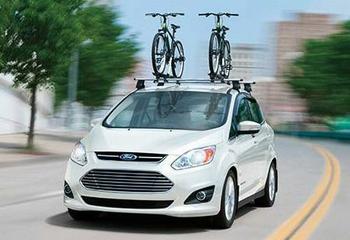
ANN ARBOR, Michigan, February 5, 2014 (ENS) – The average fuel economy of new vehicles sold in the United States in January was 24.9 miles per gallon – up 0.1 mpg from the value in December 2013, according to the University of Michigan Eco-Driving Index.
This measurement is up 4.8 mpg from the value in October 2007, the first month of monitoring by the Eco-Driving Index.
The Eco-Driving Index, which estimates the average monthly emissions of greenhouse gases generated by an individual U.S. driver who purchased a new light-duty vehicle that month, reached a record low in November 2013.

The lower the value the less environmental impact that vehicle has and the better it is for the climate.
The Eco-Driving Index for November 2013 stands at 0.79, indicating a 20 percent reduction of emissions per driver of newly purchased vehicles compared to the situation in October 2007.
October 2007 is the nominal start of the 2008 model year, the first model year for which the U.S. Environmental Protection Agency started using the current fuel economy rating system.
The amount of greenhouse gases emitted when using internal combustion engines depends on the amount of fuel used. The Eco-Driving Index estimates the amount of fuel used – and thus the amount of greenhouse gases emitted – by taking into account two primary variables: the fuel economy of the vehicle and the distance driven.
The Eco-Driving Index is developed and updated by Michael Sivak and Brandon Schoettle, both of whom work with the Sustainable Worldwide Transportation project at the University of Michigan’s Transportation Research Institute.
The mission of the Sustainable Worldwide Transportation project is to address major safety, environmental, economic, and social issues of road transportation.
A research professor with the Institute, Sivak has documented that fact that today’s Americans own fewer light-duty vehicles per household, drive them less and consume less fuel than they have in the past.
Sivak said in January that American households without a vehicle have increased nearly every year since 2007, providing evidence to back his theory that motorization may have peaked in the United States.
Following up his research from last year showing that Americans own fewer cars, drive them less and burn less fuel than in the past, Sivak examined trends from 2005 through 2012, in the proportion of U.S. households without a car, pickup truck, SUV or minivan.
He also studied variations in this proportion for the 30 largest U.S. cities for 2007 and 2012.
Sivak found that 9.2 percent of U.S. households were without a vehicle in 2012, up from 8.7 percent in 2007.
Further, the proportion of such households increased in 21 of the 30 largest cities, with the 13 cities with the largest proportions showing an increase during that time.
“The proportion of households without a vehicle is likely influenced by a variety of factors,” said Sivak. “Examples of such factors include the quality of public transportation, urban layout and walkability, availability and cost of parking, income and price of fuel.”
According to Sivak, more than half the households in New York City had no vehicle in 2012 (56 percent).
At least a quarter of households in seven other U.S. cities were without a vehicle in 2012: Washington, DC (38 percent), Boston (37 percent), Philadelphia (33 percent), San Francisco (31 percent), Baltimore (31 percent), Chicago (28 percent) and Detroit (26 percent).
Copyright Environment News Service (ENS) 2014. All rights reserved.
